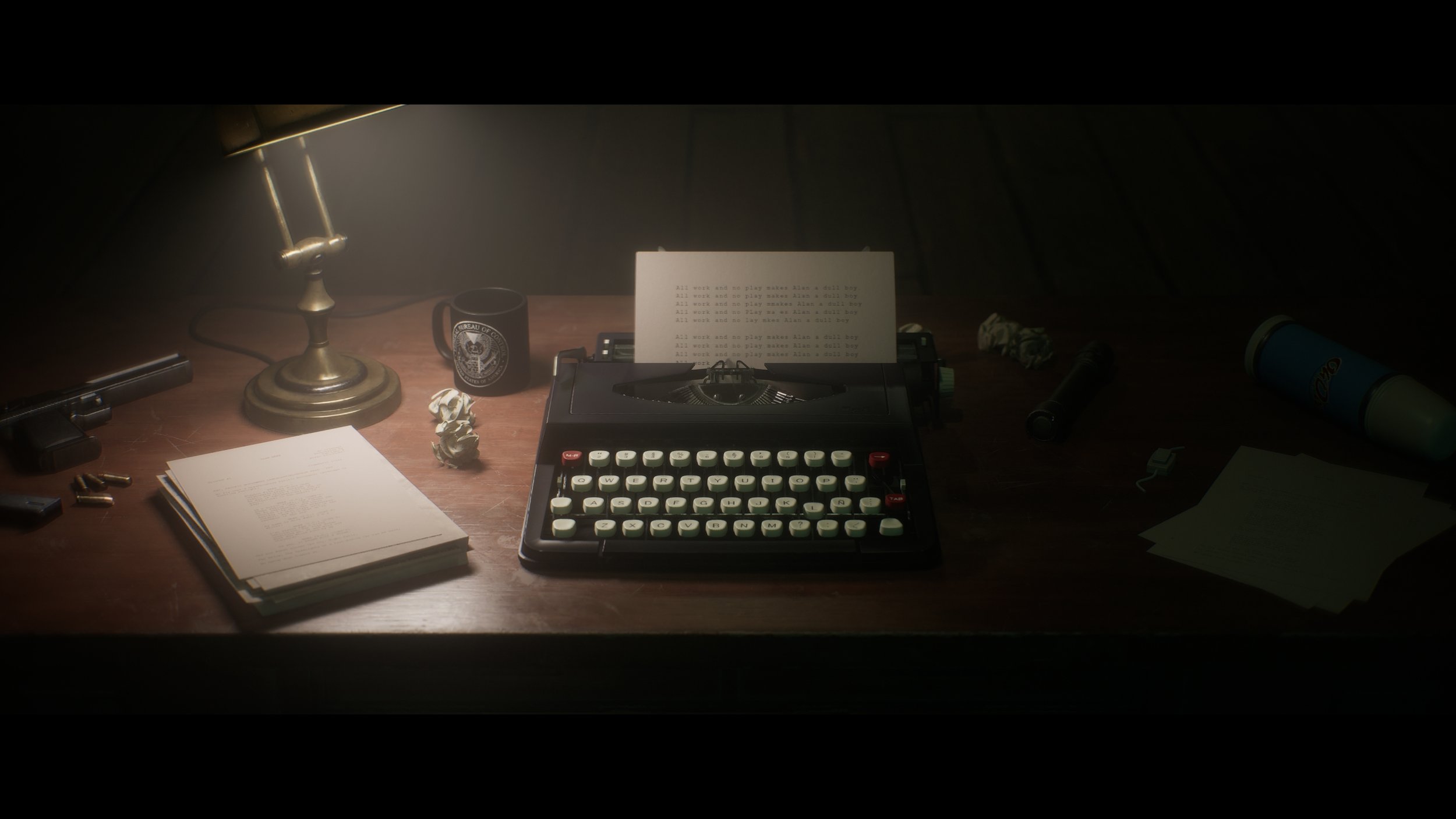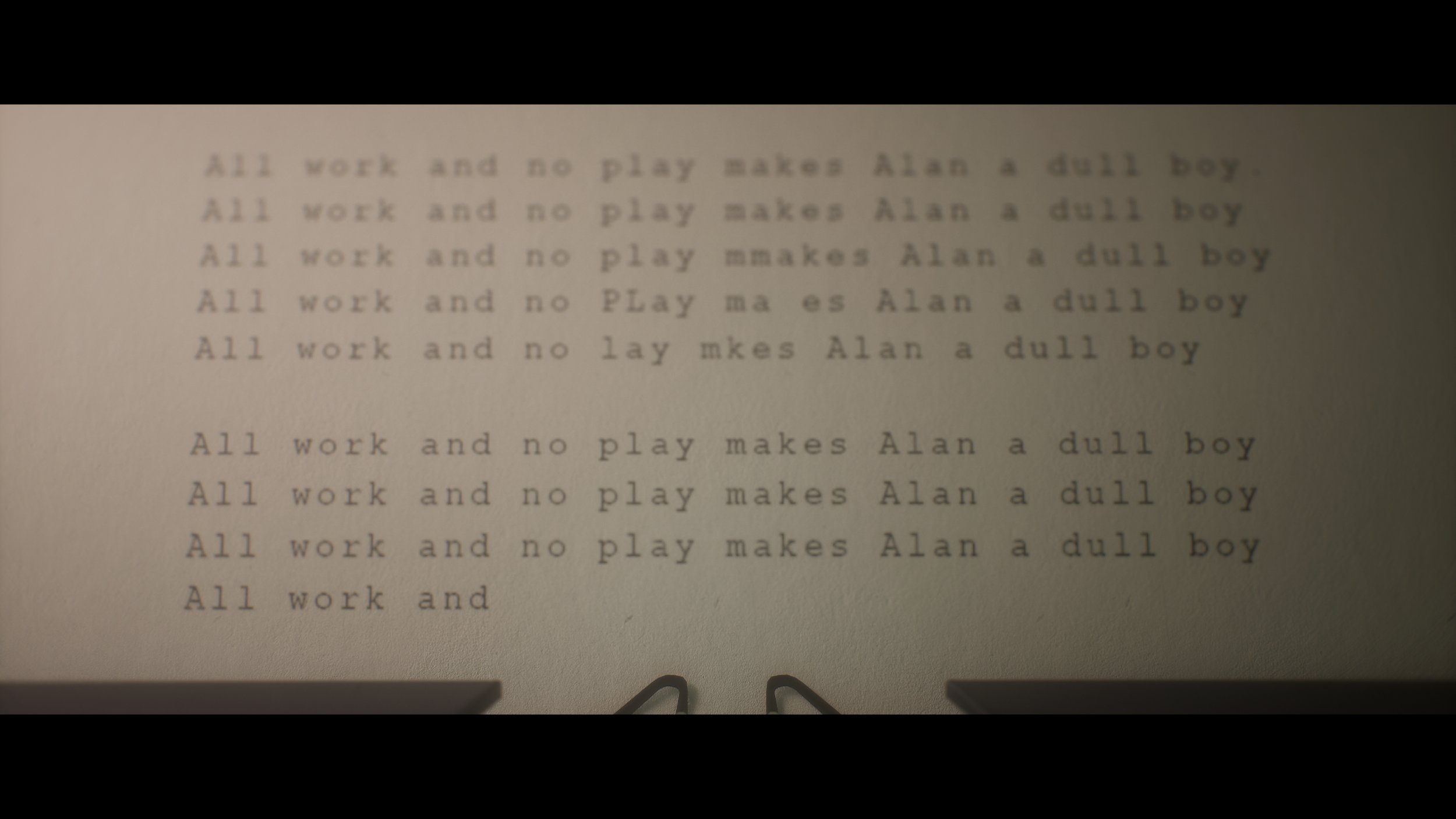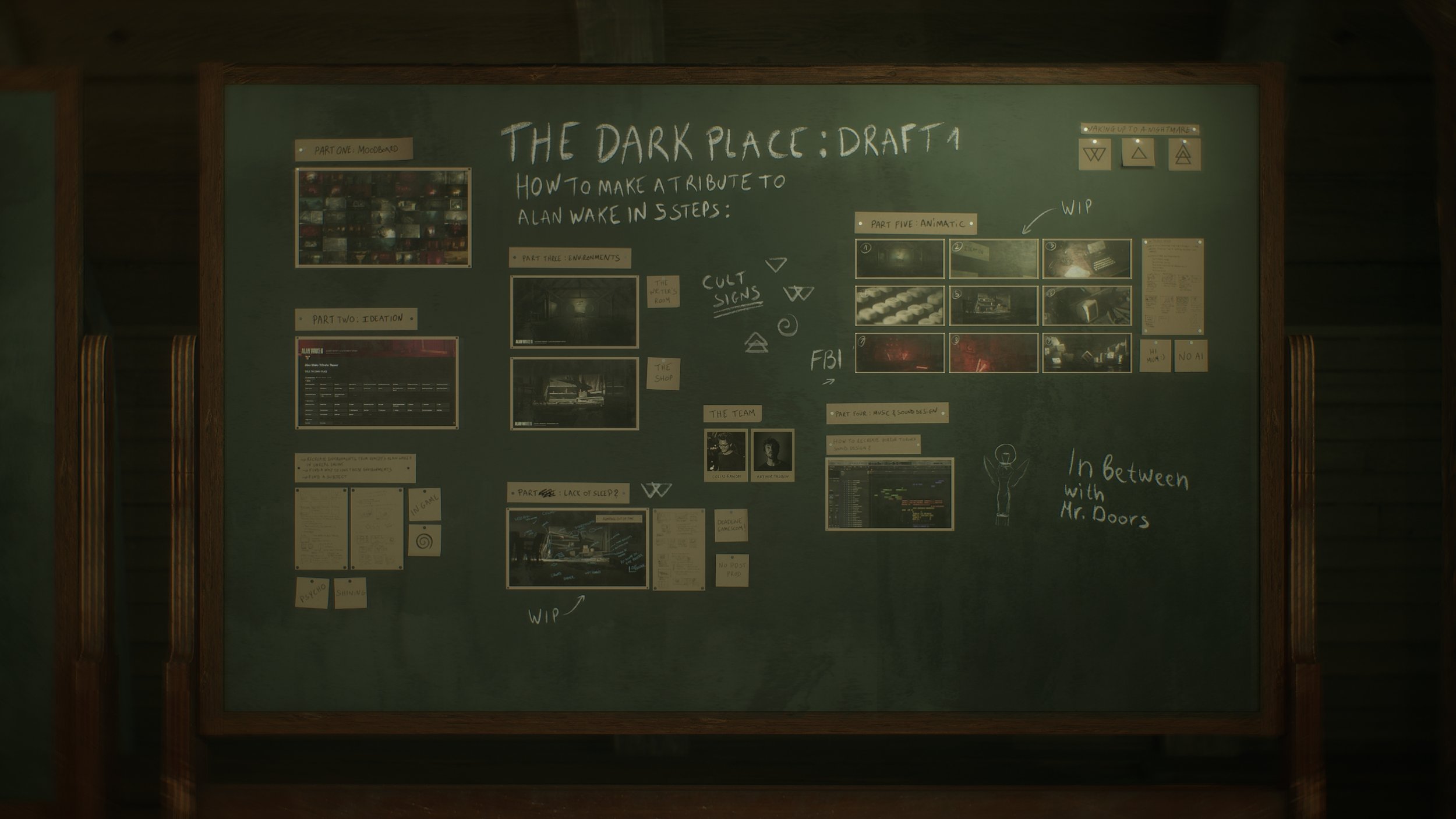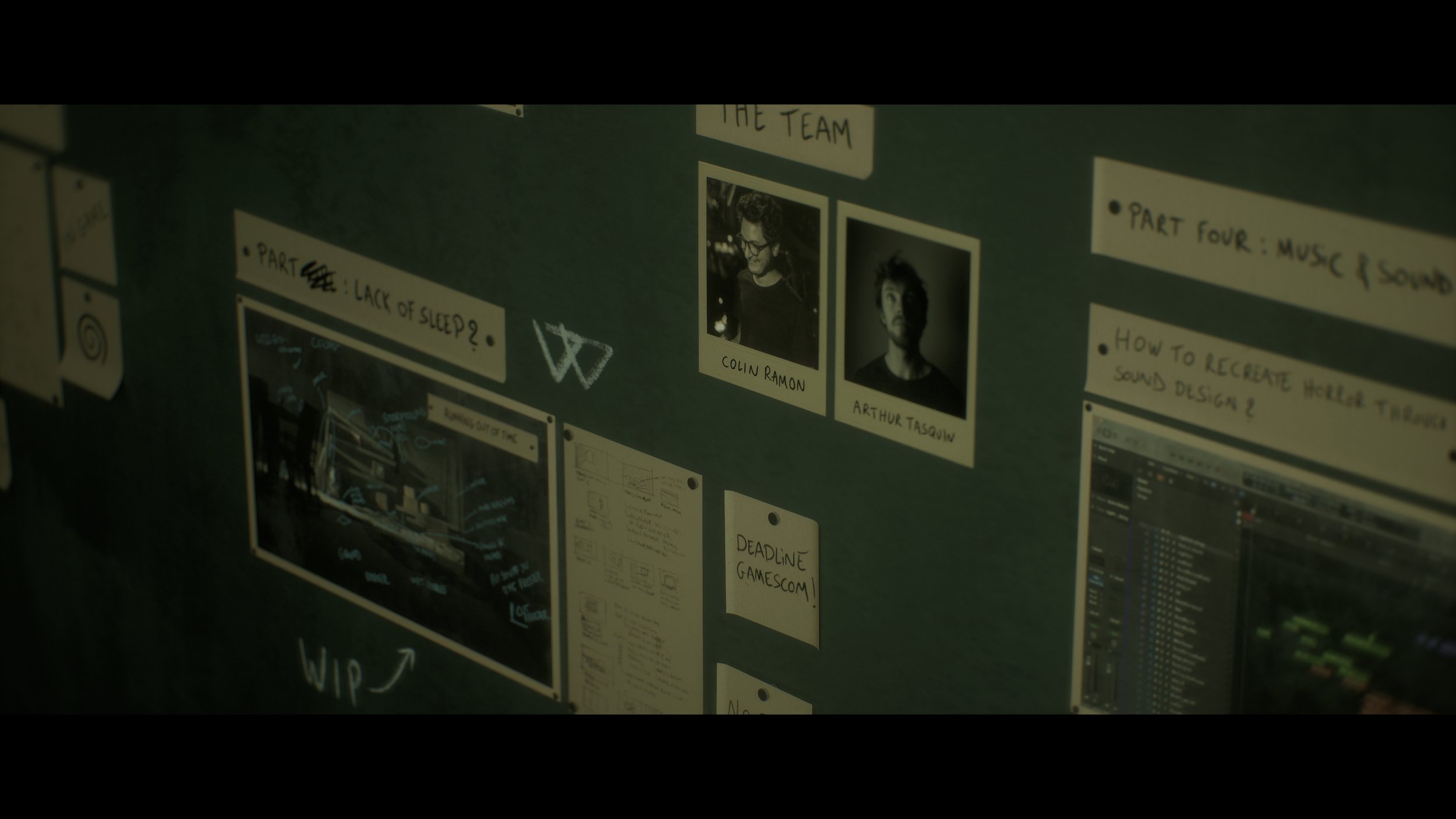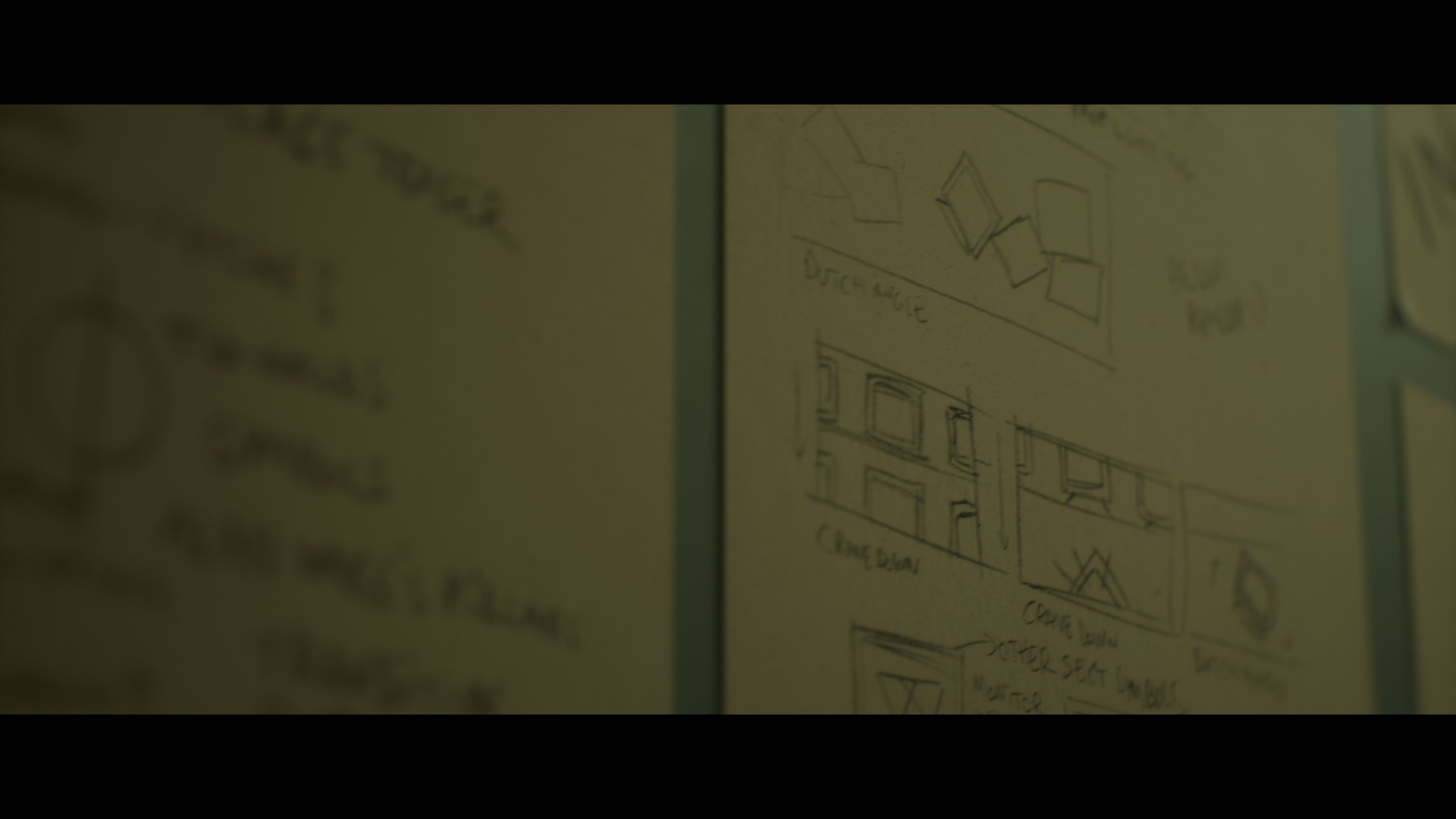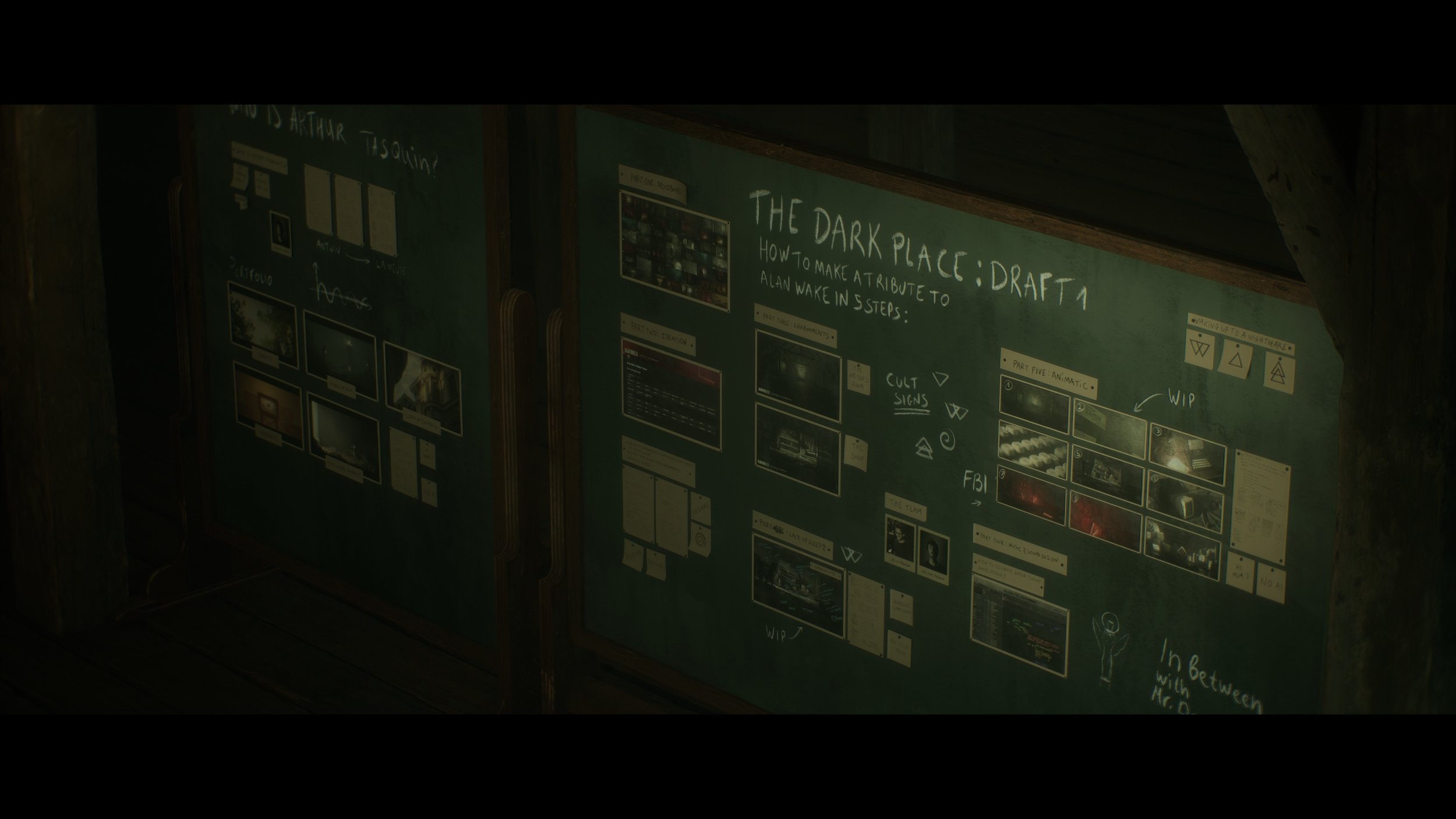the dark place
In 2024 I spent a lot of time wandering the strange and beautiful world of Remedy’s last game Alan Wake 2. I was completely amazed by the cinematic look and lighting the team managed to pull off so I decided to make a little tribute to the game in Unreal Engine.
THE IDEA
What was first an attempt to recreate some of the game’s environments in Unreal Engine quickly became a little project with its own twist. In Alan Wake the dark place is an alternate dimension in which the protagonist is trapped. To escape this nightmare, he will have to write the story of the game itself. I found this use of the metatheory, the link between the creative act and the game experience, very interesting and wanted to use that in my own work. As a player, it almost feels like the story is formed in front of your eyes which blurs the line between fiction and reality.
THE WRITER’s ROOM
The writer’s room is a crucial part of the game as it physically represents your progress. As a player you gather plot points throughout the story and you can change them on the board. The alteration of plots has an impact on your surroundings and helps you navigate the dark place. Anderson’s version of the writer’s room is “The Mind Place” where you gather clues from the investigation.
Those two rooms are a transcription of how the brain works. In a way they embody their host thoughts and creative act. I found this idea very powerful and decided to use it in my own work where the writer’s room represents my own process and lays down all the plans of the short film.
SHELVES
The game’s lighting often changes drastically when you interact with the plot board which creates high visual impact. This scene was first a recreation of Abigail Jameson’s environment (see behind the scene) that I decided to dress as if the plot would have been changed from an abandoned setting to a cult setting. The writings, monitors icons or V shaped neons are all symbols from the Cult of the Tree in Alan Wake 2.
monitors
The circle or spiral is a common theme in Alan Wake. When you are able to change the story’s components, you often end up where you started. I wanted to highlight this by ending my short film with the beginning of the game. The camera slowly turns and enters the centered monitor that plays the first sequence of Alan Wake 2, blurring the line between what’s real or not.
BEHIND THE SCENE
As always during the pre-production, I scribbled my thoughts in my notebook. Gathering a bunch of good and bad ideas, sketches and thumbnails always helps me find what I’m looking for. In this project though, it was specifically interesting because the theme is the creative act through writing. Having those physical notes included in the project was meaningful and important to me. In this section, we’ll go through a few workflows and ideas I implemented to meet the deadline.
REFERENCES
Most of the references came from my own screenshots captured while playing the game but I also relied on concept art from the Remedy team.
ENVIRONMENT STUDY
IN GAME REFERENCE
RECREATION IN UNREAL ENGINE
NOTES
BOARD HANDWRITING
By using Procreate on Ipad, I was able to create atlases of handwriting alphas. I could then model 3D papers and edit the UVs to fit the appropriate writing.
SHELVES CULT PAPERS
In Alan Wake 2 you see a lot of crazy notes left by people from the cult. I replicated some of them and added other personal notes in the mix.
QUIXEL BASHING
My goal with this project was to get as close as possible to the references without modeling anything from scratch. By combining different meshes together and playing with the modeling tools I managed to tackle all the props of the writer’s room. You can see here that the board feets were made of piano pieces. More on this here.
physical scattering
One of my favorite workflows to realistically scatter junk is to use the in-house physical gravity of Unreal coupled with custom collisions. I explained the process here.

TITLES
Except for the music, everything has been made in Unreal Engine. I decided to use the impressive CRT TV effect by CemTezcan for the end titles.
MUSIC & SOUND DESIGN
The sounds and music were composed by Colin Ramon, a dear friend of mine and a talented musician who’s vision added a lot of depth to the project.
NOTION
As a big user of Notion, I relied on this system to track my progress but also organize our collaboration. Having everything in one place eased the communication.
MUSIC
We realised quite early that the music would let the room to the sound design. Our goal was to make the place unwelcoming and creepy.
SOUNDS
How do you translate a horrific nightmare happening in another dimension ? From that premise, Colin decided to go full analog, creating himself the sound you hear in the project. By using a physical soundbox, a cello and distortion he pushed the eerie feeling to a whole new level.
TOOLS
For this project I’ve developed two tools to help me speed processes. I made them freely available on my Artstation Marketplace so don’t hesitate to grab them if you’re interested.
OUTLINE MATCH TOOL
Matching a reference can be tricky so I built this simple tool that overlays outlines on top of your camera. This way you can tweak the camera’s location and depth of field with a direct feedback from your reference’s perspective.
SCREAMER TRANSITION TOOL
As explained above, I wanted everything to be in Engine like a video game so I’ve worked on a screamer post process effect to help with transitions. This proved to be quite challenging and I didn’t quite get where I wanted but it still works in my opinion.
INFOS
CREDITS
DESIGN: Arthur Tasquin
MUSIC: Colin Ramon
YEAR
2024


